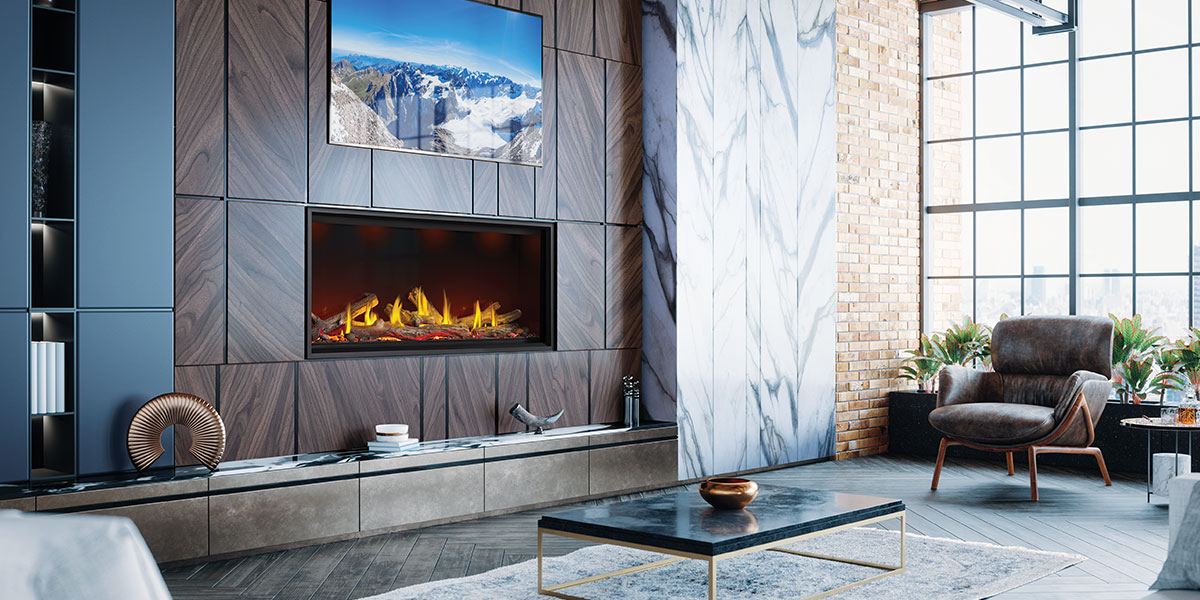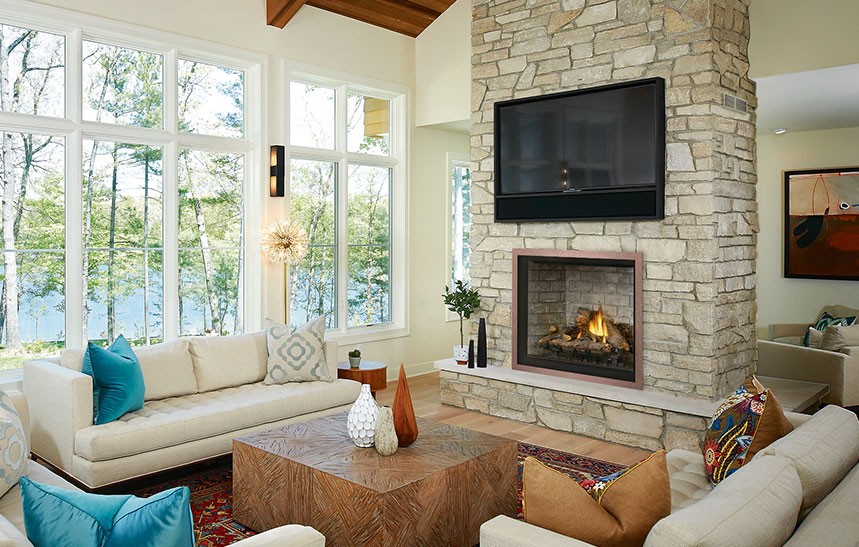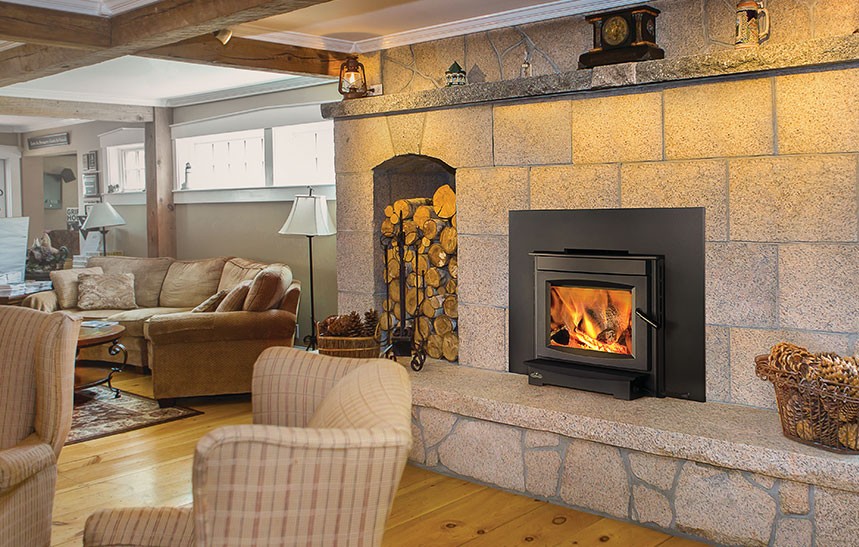From our friends at Napoleon!
Canada experiences long, cold winters, making fireplaces and fireplace inserts a popular choice for homeowners looking to add warmth and ambiance to their homes. There are several key differences between traditional fireplaces and fireplace inserts that should be taken into consideration. Whether you’re looking for a cozy spot to curl up with a book on a cold winter’s day or a reliable source of heat to keep your entire home warm, this guide will help you make the best choice for your heating needs and preferences.

WHAT IS A FIREPLACE?
A fireplace is a structure designed to contain and maintain a fire for heating or decorative purposes. It typically consists of a firebox, a chimney, and a hearth and can be fueled by wood, gas, electricity, or other energy sources. Fireplaces can come in various styles and designs and are often found in homes as a source of warmth and ambiance.
WHAT IS A FIREPLACE INSERT?
A fireplace insert is a heating appliance designed to be installed into an existing masonry or prefabricated fireplace. It typically consists of a fireproof box made of steel or cast iron, a glass door to enclose the fire, and a ventilation system to circulate the warm air throughout the room. Fireplace inserts are usually fueled by wood, gas, or pellets and are designed to be more efficient than traditional fireplaces, providing more heat output and requiring less fuel. They can also be customized to match the home’s aesthetics and come in various sizes and styles to fit different fireplace openings.
THE DIFFERENCES BETWEEN FIREPLACES AND FIREPLACE INSERTS
While fireplaces and fireplace inserts may seem similar at first glance, there are several key differences between them:
Construction and Installation
A traditional fireplace is usually built into the home during construction and consists of a firebox, a chimney, and a hearth. On the other hand, a fireplace insert is designed to be installed into an existing fireplace opening, making it a popular option for homeowners who want to renovate their existing fireplace.
Efficiency
Wood burning with open flues and chimneys are notoriously inefficient, with much of the heat they generate escaping up the chimney. Fireplace inserts, on the other hand, are designed to be much more efficient, with closed doors that allow for more controlled combustion and ventilation systems that help to circulate warm air throughout the room.
Cost
Fireplace inserts tend to be more expensive than traditional wood-burning fireplaces, but they can also be a more cost-effective option in the long run. Because they are more efficient, they require less fuel to generate the same amount of heat, which can result in lower heating bills over time.
Maintenance and Upkeep
Maintaining a traditional wood fireplace can be messy and time-consuming. Ashes and soot must be cleaned out of the firebox regularly, and the chimney must be inspected and cleaned periodically to prevent creosote buildup. On the other hand, gas fireplaces and gas fireplace inserts are designed to be low maintenance, with features like self-cleaning glass and automatic ignition systems that make them easy to use and care for.

WHAT TO CONSIDER WHEN CHOOSING BETWEEN A FIREPLACE AND A FIREPLACE INSERT
When it comes to choosing between a traditional fireplace and a fireplace insert, several factors should be taken into consideration:
Type of Fuel
Traditional fireplaces are typically fueled by wood, while fireplace inserts can be fueled by wood, gas, or pellets. Each fuel type has unique advantages; one may be more suitable for your home than another.
Heating Needs
If you’re primarily looking for a source of supplemental heat for a single room, a fireplace insert may be more efficient and cost-effective. A conventional fireplace may be a better choice if you’re looking for a more traditional heat source for your entire home.
Aesthetics
Fireplaces and fireplace inserts come in various styles and designs. Traditional fireplaces can be customized with different mantels and surrounds, while fireplace inserts can be designed to match the look and feel of your home. Shop for one that complements your home’s decor and fits your aesthetic preferences.
Environmental Impact
Both traditional fireplaces and fireplace inserts impact the environment, so try to choose the one with the lowest impact possible. Wood-burning fireplaces and fireplace inserts can release harmful pollutants into the air, while gas and pellet inserts are generally considered more environmentally friendly.
Budget
Fireplace inserts tend to be more expensive than traditional fireplaces. Still, they can be more cost-effective in the long run, thanks to their increased efficiency and lower fuel consumption.
KEEP WARM WITH A NAPOLEON FIREPLACE OR INSERT
Fireplaces and fireplace inserts are popular heating options that add warmth and ambiance to any home. However, several key differences should be considered when choosing the best choice for your needs. No matter which option you choose, a Napoleon fireplace or fireplace insert can provide a warm and inviting focal point for your home, making it a cozy and comfortable place to be during Canada’s long, cold winters.

To read the details please check out the Napoleon blog post here!

